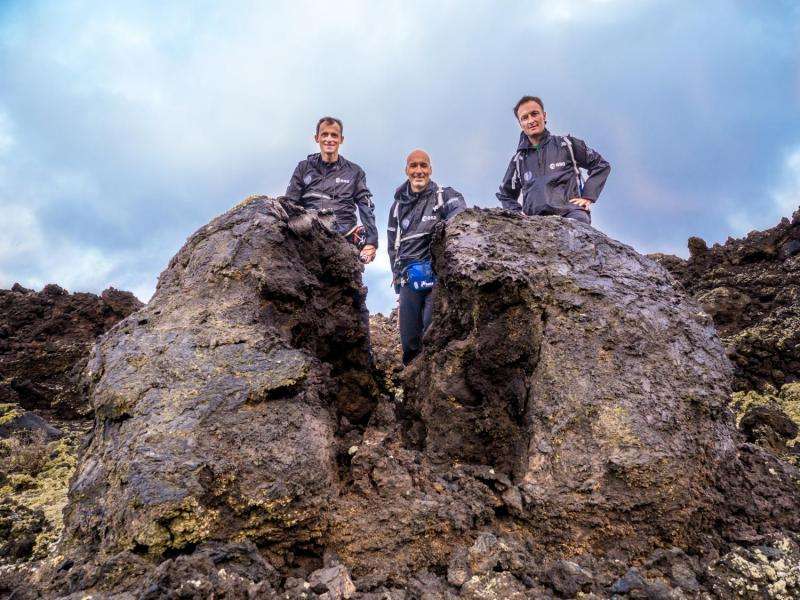Image: Mars in Lanzarote

ESA's Matthias Maurer with ESA astronauts Luca Parmitano and Pedro Duque on a field trip for the Pangaea planetary geology course.
On field trips in the Mars-like landscape of Lanzarote, one of the Spanish Canary Islands, the students were tasked with interpreting geological features to understand the history of how the island formed. The goal is to help astronauts choose the best places to explore and collect rock samples.
This session put into practice a week's training in Bressanone, Italy, last September where they learned about Earth and planetary geological processes as well as how to recognise rocks and meteorites.
The trio went on progressively difficult day trips, ending with a free exploration of the countryside searching for interesting samples while keeping in contact via radio with scientists at 'mission control'.
Lanzarote was chosen for this course because of its geological similarity with Mars, such as a volcanic origin, mild sedimentary processes owing to a dry climate, hardly any vegetation and a well-preserved landscape.
The course took place in collaboration with the Geopark of Lanzarote, a protected area with pristine wilderness.
Provided by European Space Agency





















